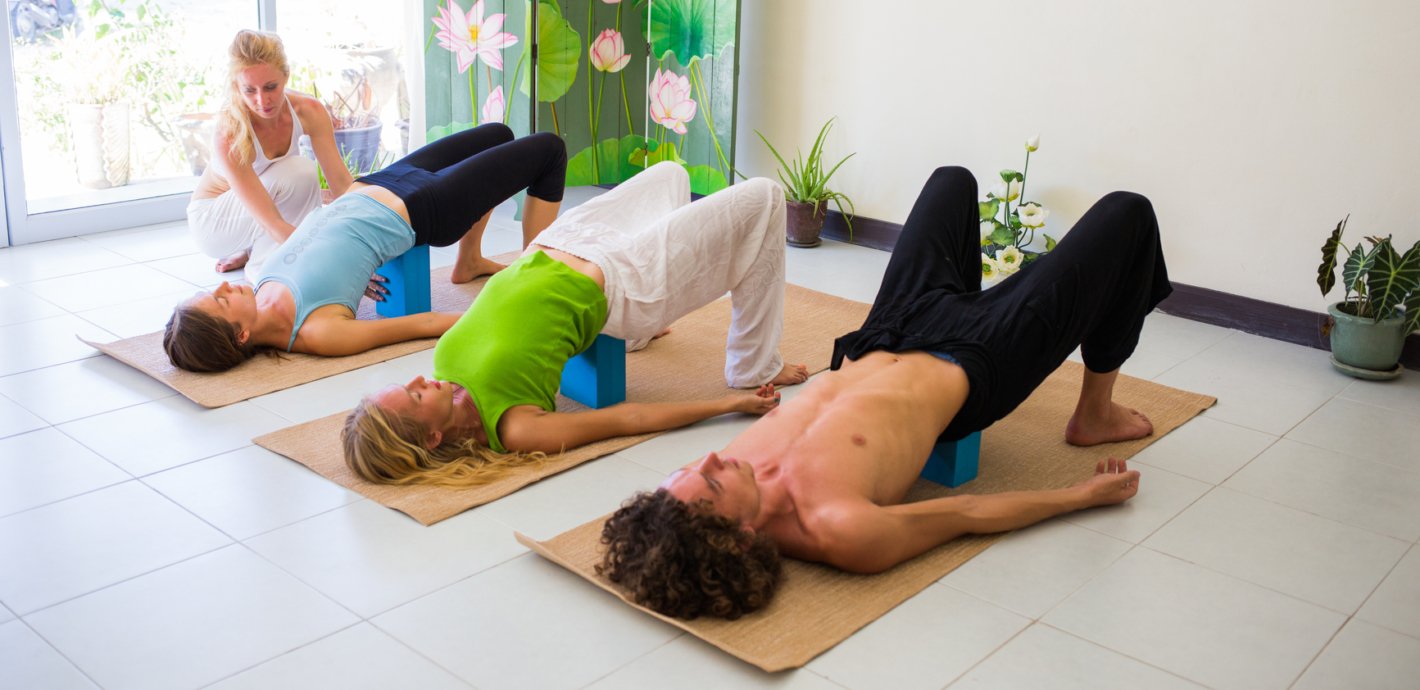“Āsana brings good energy into the body.”
—Sharath Jois
Western medicine has a long-standing tradition of treating symptoms rather than addressing deeper causes and behaviors that impact human health. But now, allopathic healthcare providers are beginning to recognize the efficacy of yoga, not just as a physical practice that can improve one’s mood, but also as an evidence-based therapeutic intervention for chronic and sub-acute health concerns. This is profound, because, as many of us who have been practicing for years know, yoga impacts our wellness on many levels, driving awareness, deeper intention, and an overall elevation of our well-being and consciousness.
When life-altering practices, such as yoga, breath work, and meditation, are applied to populations that suffer conditions such as chronic back pain, PTSD, and other lifestyle-influenced health concerns, studies are revealing very positive results. These findings are especially relevant now due to the severe opioid crisis. In the U.S., chronic pain is a leading cause of physician visits and plays a major role in the use of opioid painkillers, which can often lead to drug dependence and diminished health over time. This addiction kills more than 33,000 Americans annually, reports the CDC.
A study published this July in the Annals of Internal Medicine found that yoga is a potentially viable intervention for back pain, and may be used in place of painkillers. At the start of the study, approximately 70 percent of the 320 participants were taking medication for chronic back pain on a regular basis. After three months of yoga practice or physical therapy, the percentage still taking medication cut in half.
Another unrelated study, also published this July in the American Journal of Preventive Medicine, found that military veterans benefited from yoga interventions for chronic pain. Veterans often suffer from more complicated health challenges than the civilian population for obvious reasons. These recent findings show that when patients use yoga to relieve physical pain, they require less medication.
That’s not all. Yoga has also shown, in recent years, to improve anxiety, cognitive function, depression, insomnia and much more. Cancer patients are rolling out their mats to supplement cancer treatments, easing the often long and difficult recovery process. Those who are at risk of developing heart disease are also looking to get bent. In a new study published in the Journal of Education and Health Promotion this August, participants who practiced yoga for one hour six days a week for three months experienced highly significant changes in their cholesterol levels.
Related: The New Science on the Health Benefits of Yoga
There’s no question that scientists are finally embracing the fact that yoga complements Western medicine. Furthermore, the results of lifestyle interventions, such as a yoga practice, may exceed pharmacological ones, driving more sustainable healing for the long term. Adding a regular practice with a learned teacher may help modify patterns of disease and chronic illness in the body.
At a pop-up Yoga & Science conference covering “The Emerging Science of Consciousness Regeneration, Health, and Longevity” in Brooklyn, NY this May, yoga master Sharath Jois, the grandson of world-famous founder of Ashtanga yoga, shared his experience working with a student who has asthma.
“I read books and used wisdom from my grandfather. I realized Nadi Shodhana pranayama would help, and it did. After six months, he could take less medication. I got a message from him that said, ‘I’m alive because of you.’ It’s not me. It’s yoga,” Sharath said.
There is a time and a place for allopathic medicine just as there is a need for yoga. Sharath discussed the teachings of his grandfather, K. Pattabhi Jois, and how he respected Western medicine, though he also acknowledged its limitations.
“My grandfather taught people with health issues. Modern medicine cannot cure everything. His views regarding science and yoga were that sometimes you need a doctor. If your bone is broken, you need medical science for that. He always accepted medicine. But certain ailments can be cured through āsana and pranayama,” Sharath said.
The Yoga & Science conference united top thinkers in the yoga and medical community. What researchers repeatedly concluded throughout the daylong event is that there is no doubt that yoga, meditation, and pranayama can have a tremendous impact on health, immunity, and wellness. Yoga therapy is still an infant field in terms of clinical trials and research, but scientists are encouraged by recent findings.
“Yoga and medicine are most certainly compatible,” says Sat Bir Singh Khalsa, PhD, an assistant professor of Medicine at Harvard Medical School at Brigham and Women’s Hospital. “They are both systems of behavioral practices that can modify the body and the mind. The reality is, of course, you must respect the condition of a patient before applying yogic interventions, and it will be largely adjunctive, but the practice can have life-changing qualities. You can’t lose by practicing yoga in a safe way.”








Comments (0)